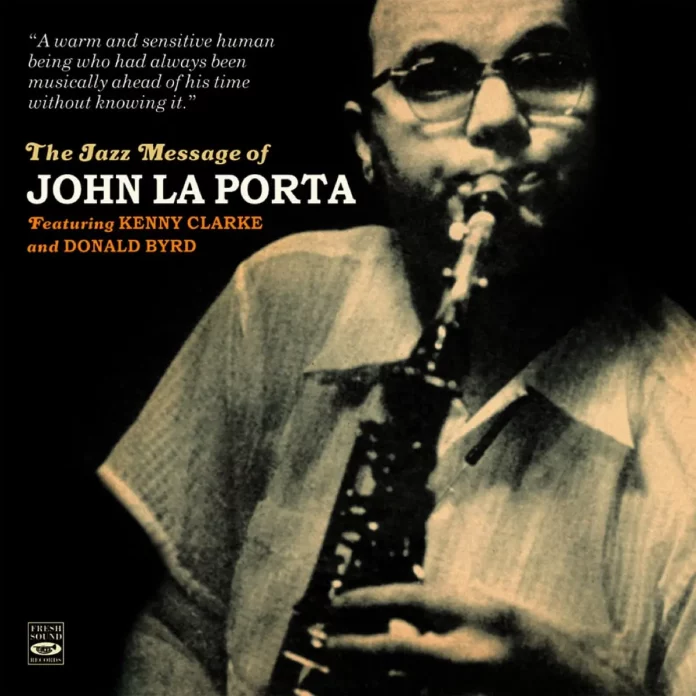There are very few recordings by saxophonist and clarinettist John La Porta. He operated in the late 1940s and early 50s, playing with the Woody Herman band, studying under Lennie Tristano and becoming known for his inventive work with Charles Mingus and the Jazz Composers Workshop.
The recordings here are from the album The Jazz Message (Savoy MG12064) which also had tracks by Hank Mobley, and Klook’s Clique (Savoy MG12065), which was released under Kenny Clarke’s name. The drummer, with his characteristic snare and hi-hat approach, and accomplished bassist Wendell Marshall provide first-rate support, augmented by Horace Silver, who had just started making a name for himself recording for Blue Note, and the British pianist Ronnie Ball, who had moved to New York in 1952.
The 23-year-old Donald Byrd is on trumpet, having just replaced the late Clifford Brown in Blakey’s Messengers. Byrd was fast becoming a feature for many of the hard-bop outfits emerging at the time and here varies between clear-toned open blowing, typified on I Married An Angel, and tight use of mute (I Hear A Rhapsody).
Like other altoists at the time, La Porta was influenced by Charlie Parker, but not unduly so. His distinct sound can be heard to good effect on Clarke’s Volcano (which bears a startling resemblance to Monk’s Epistrophy), La Porta-Thority and Budo. He plays with a harder edge than many associated with the Tristano school, although he was more than capable of a lighter, more restrained tone. The ballads demonstrate this, as does his haunting contribution on Yesterdays, which is played as a quartet. Ball’s piano work is particularly impressive, showing how he had settled into the bebop idiom, especially on Play Fiddle Play, Will Wail and on the ballads.
The nicely constructed Jazz Message has each instrument being introduced – brushes, walking bass, Silver’s single note runs, La Porta’s mellow, slightly quirky alto and Byrd’s muted trumpet. The track ends with phased departures, giving a satisfying symmetry.
La Porta changed direction soon after, pursuing a career in teaching (including Berklee); education’s gain was our loss, but our thanks are due to Jordi Pujol for another highly enjoyable release.
Discography
Budo; I Married An Angel; The Jazz Message (Freedom For All); Volcano; La Porta-Thority; I Hear A Rhapsody; Will Wail; Yesterdays; Play, Fiddle, Play (56.58)
Donald Byrd (t); John La Porta (as); Horace Silver (p) (1-3); Ronnie Ball (p) (4-9); Wendell Marshall (b); Kenny Clarke (d). Hackensack, NJ, 30 January & 6 February 1956.
Fresh Sounds FSRCD 1111
















